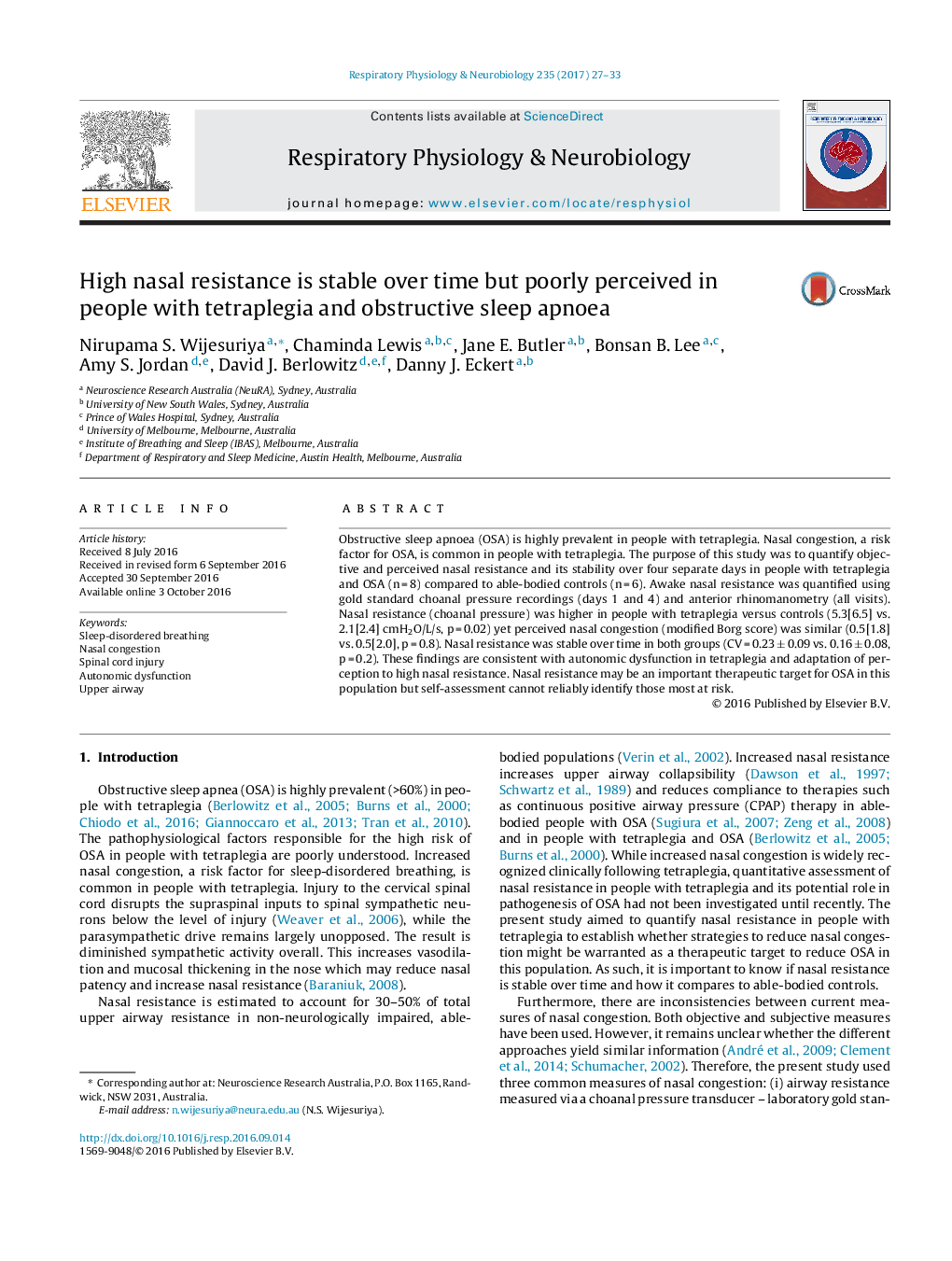| کد مقاله | کد نشریه | سال انتشار | مقاله انگلیسی | نسخه تمام متن |
|---|---|---|---|---|
| 5594226 | 1571295 | 2017 | 7 صفحه PDF | دانلود رایگان |
عنوان انگلیسی مقاله ISI
High nasal resistance is stable over time but poorly perceived in people with tetraplegia and obstructive sleep apnoea
ترجمه فارسی عنوان
مقاومت بالا بینی در طول زمان پایدار است، اما در افراد مبتلا به تتراپلژی و آپنه انسداد خواب ضعیف درک می شود
دانلود مقاله + سفارش ترجمه
دانلود مقاله ISI انگلیسی
رایگان برای ایرانیان
کلمات کلیدی
تنفس اختلال خواب گرفتگی بینی، آسیب نخاعی، اختلال شخصیت راه هوایی بالا،
موضوعات مرتبط
علوم زیستی و بیوفناوری
بیوشیمی، ژنتیک و زیست شناسی مولکولی
فیزیولوژی
چکیده انگلیسی
Obstructive sleep apnoea (OSA) is highly prevalent in people with tetraplegia. Nasal congestion, a risk factor for OSA, is common in people with tetraplegia. The purpose of this study was to quantify objective and perceived nasal resistance and its stability over four separate days in people with tetraplegia and OSA (n = 8) compared to able-bodied controls (n = 6). Awake nasal resistance was quantified using gold standard choanal pressure recordings (days 1 and 4) and anterior rhinomanometry (all visits). Nasal resistance (choanal pressure) was higher in people with tetraplegia versus controls (5.3[6.5] vs. 2.1[2.4] cmH2O/L/s, p = 0.02) yet perceived nasal congestion (modified Borg score) was similar (0.5[1.8] vs. 0.5[2.0], p = 0.8). Nasal resistance was stable over time in both groups (CV = 0.23 ± 0.09 vs. 0.16 ± 0.08, p = 0.2). These findings are consistent with autonomic dysfunction in tetraplegia and adaptation of perception to high nasal resistance. Nasal resistance may be an important therapeutic target for OSA in this population but self-assessment cannot reliably identify those most at risk.
ناشر
Database: Elsevier - ScienceDirect (ساینس دایرکت)
Journal: Respiratory Physiology & Neurobiology - Volume 235, January 2017, Pages 27-33
Journal: Respiratory Physiology & Neurobiology - Volume 235, January 2017, Pages 27-33
نویسندگان
Nirupama S. Wijesuriya, Chaminda Lewis, Jane E. Butler, Bonsan B. Lee, Amy S. Jordan, David J. Berlowitz, Danny J. Eckert,
